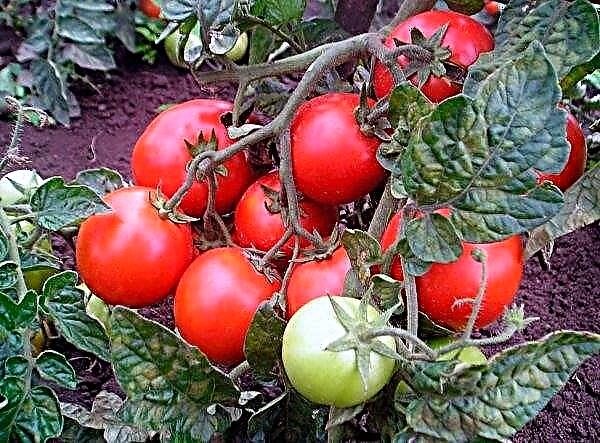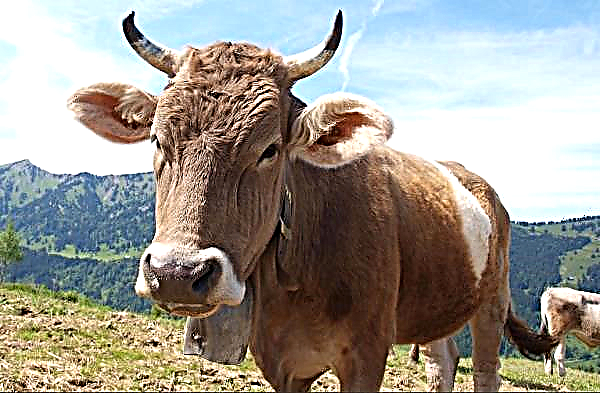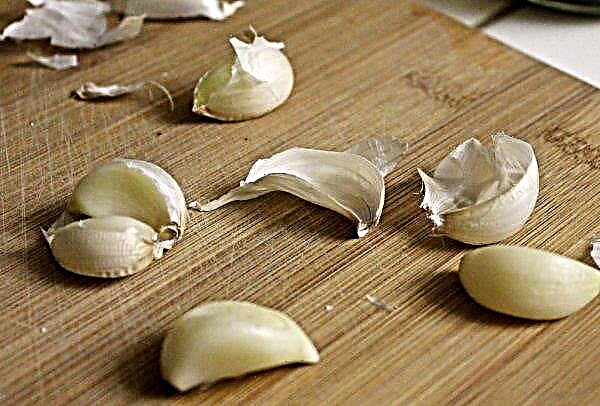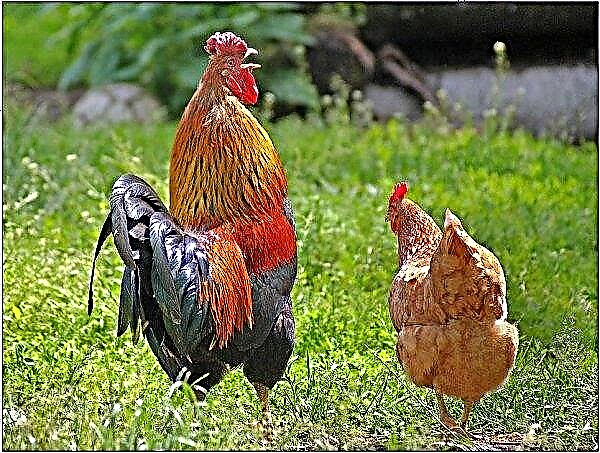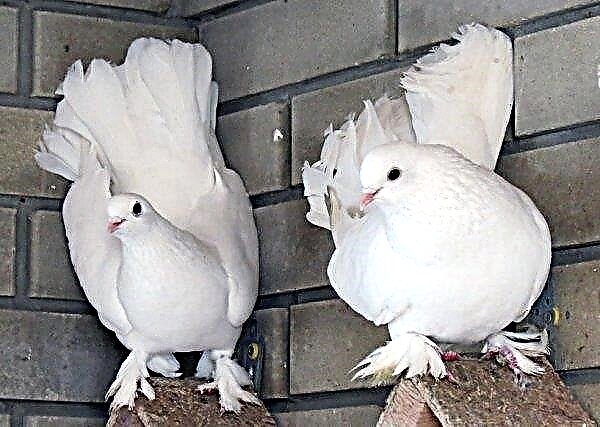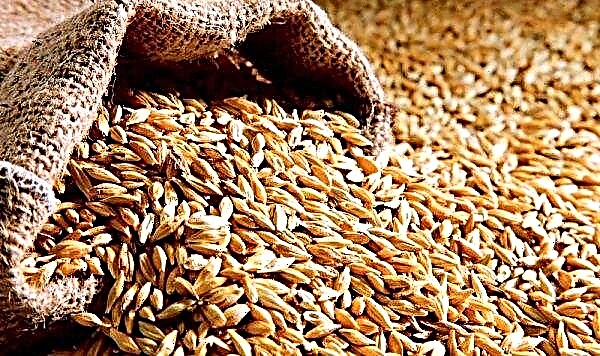Patterned emerald foliage and amphora-shaped flowers of Gasteria can be a worthy decoration of any interior. The plant easily adapts to the new environment and does not require special growing conditions. What is the uniqueness of the culture and what agrotechnical tricks will help achieve its fast flowering, read further in the article.
Houseplant Description
Botanists attribute Gasteria to the genus of succulents of the tribe of the Aloevs of the Asfodelovy subfamily. This is a herbaceous perennial with thick leafy rosettes, which are the main decorative element of the plant.
Its leaves are distinguished by their fleshy structure, a wide tongue-like shape, smooth edges and a pointed tip. They are located most often in a tiered order, although some varieties are characterized by two rows. Depending on the type, the surface of the sheet plates may be tuberous or glossy, flat or slightly concave. Varietal differences of the plant are also manifested in the coloring of biomass. Most often, it is dark green with a generous scattering of bright light specks or stripes. There are instances with purple, purple and pale pink stains. A characteristic feature of Gasteria is the stable width of the leaves with different variations in their length (from 4 to 25 cm).
Check out the features of growing other succulents:
Gasteria flowering lasts for a month. At this time, the plant, after each leaf tier, produces raceme-shaped peduncles, the length of which can reach 1 m. Alternately, yellow, red, green or orange buds open with a distinct extension at the base.
A small achene with dusty grains matures on a faded outlet. In the natural environment, they are easily spread by wind, which contributes to the hybridization of cultivar species. Today, more than 70 of them are known. In indoor floriculture, the following gastereias are popular:
Important! Faded buds must be removed from the outlet along with the arrow so as not to waste the plant’s nutritional resources on seed maturation.
Optimal conditions for detention
When grown indoors, Gasteria has established itself as an unpretentious and hardy plant that easily adapts to the bright sun and partial shade, loves coolness and does not require frequent watering.
Due to the biological characteristics of photosynthesis of succulents, a flowerpot with a flower is recommended to be placed in the bedroom. When choosing a place for it, one should take into account certain agrotechnical subtleties:
- Lighting. In the cold season, the flower can grow in the shade, but in summer, be sure to place it on the windowsill of a western or eastern orientation. To prevent direct sunlight from damaging the lush foliage, during the period of ultraviolet activity, shade the outlet with light-scattering curtains. If the pot is constantly located on the north side of the house, the culture will cease to bloom, so for its successful budding, additional fluorescent lamps in winter will come in handy. They are located at a distance of half a meter from the top of the flower and turned on for 7-8 hours.
- Temperature. Given the African origin of the flower, the optimal indicators for it are + 18 ... + 25 ° C in the summer and + 6 ... + 12 ° C in the winter. Such seasonal differences contribute to abundant flowering. Their absence can provoke inhibition of budding or premature drying of the hands.
- Humidity. Gasteria safely adapts to the apartment microclimate and does not require additional irrigation. Its thick foliage accumulates moisture, so that the plant can be watered once a week, preventing the earthen coma from drying out completely.

Home Care
In order to grow gasteria, raging with emerald overflows of elastic foliage and the richness of shades of hanging buds, it is important to provide it with comfortable conditions for growth. Decorative succulent depends on the quality of the potted soil, the amount of moisture and fertilizer, the potential of the selected seedling, the technology of planting and the location of the pot.
Important! All succulents painfully endure drafts, as well as direct sunlight and precipitation during the summer take to the street.
Location
In the house, the ideal area for this culture is the southeast or southwest side, where there is no direct exposure to ultraviolet radiation and drafts. Southern windows are categorically unsuitable, because with sunshine on sheet plates, burns occur and patterning is lost.
How often do you need to water and fertilize
Since in the natural environment, succulent prefers rocky terrain, frequent watering in room conditions does not need him. However, one should not forget about these procedures. For full development, the flower requires moderate hydration of the potted substrate as it dries.
In summer, watering is more frequent, and in winter it is minimized. Do not try to moisten the flower at once for the whole week. Excess moisture attracts fungal infections and putrefactive diseases, which makes it much more dangerous than drought.Did you know? Translated from Latin, Gasteria means "pot-bellied vessel." The name of the plant is due to the shape of its flowers.
Watering is carried out in a traditional way under the root, avoiding the spray in the center of the outlet. In this case, settled water of room temperature is used. During the active vegetation period (from May to September), the plant must be fed with complex mineral fertilizers with a two-week periodicity. Recommended purchased mixes for Aloevs in half dosage. With the advent of cold weather, when the flower enters the dormant phase, fertilizers become irrelevant.
During the active vegetation period (from May to September), the plant must be fed with complex mineral fertilizers with a two-week periodicity. Recommended purchased mixes for Aloevs in half dosage. With the advent of cold weather, when the flower enters the dormant phase, fertilizers become irrelevant.
Important! The flower does not like large containers and develops better in tight pots with good drainage..
Transplant Features
It is advisable to transplant Gasteria annually in spring or early summer. This procedure is important for building up thick biomass and forming buds. Transplantation is carried out by transshipment of a flower together with a moistened earthen lump into a new pot, the diameter of which is 1-2 cm larger than the previous one.
Planting capacity should be shallow, preferably clay or ceramic. Products from these materials pass oxygen well, promoting aeration of the roots.
The substrate is prepared from:
- 2 parts of sheet land;
- 1 part peat;
- 0.5 parts of river sand;
- 0.3 pieces of broken brick.
Video: Gasteria transplant
Breeding
All succulents are also convenient by the simplicity of their reproduction. To obtain a new seedling, flower growers use:
- seeds;
- offspring (daughter sockets);
- cuttings.
Did you know? Bioenergy claims that Gasteria brings good luck. They also believe that her energy has a good effect on those people who were born under the sign of the zodiac Cancer.
Seeds
Those who prefer the seed method should first carry out the pollination procedure of inflorescences. This is done by shaking or using a brush when pollen is transferred from one bud to another. The formed seed box will begin to ripen in the second decade of July. It is important to prevent its cracking, otherwise the seeds randomly spill out. After harvesting, the planting material is dried and checked for germination. To do this, it is dipped in saline (1 tablespoon per glass of water). Surfaced specimens are unsuitable for sowing and must be removed.
After harvesting, the planting material is dried and checked for germination. To do this, it is dipped in saline (1 tablespoon per glass of water). Surfaced specimens are unsuitable for sowing and must be removed.
Then it is recommended to soak the seeds for a day in a growth stimulator (Emistim, Kornevin, Ekosil) and sow in the traditional way in a moist substrate. The container is tied with polyethylene and cleaned in a dark place before emergence. When the first sprouts appear from under the ground, the container with the planting is placed on a well-lit window sill.
Did you know? Some succulents are an invariable ingredient in such strong drinks as pulque, tequila, mezcal. In particular, these drinks are made from agave.
Leaf
The simplest and most popular method of propagation is cuttings. Succulents do not require preliminary rooting in water and well take root in wet river sand. To do this, it is enough to cut off a mature, well-developed leaf plate, slightly dry it, and then stick it 1 cm into a crude substrate. Over time, filamentous roots form there. To accelerate this process, it is advisable to cover the stem with a glass container and monitor the moisture of the soil.
Child sockets
When transplanting plants in an earthen coma, children are often found, which must be transplanted into a new pot. This is done as follows:
- Pour drainage onto the bottom of the container.
- Sprinkle it on top with the prepared substrate, leaving room for the plant.
- Pour.
- Carefully separate the daughter outlet from the mother bush and place it in a container.
- Sprinkle the root with fresh soil and tamp.
Video: Gasteria propagation by daughter sockets
Flowering period
The appearance of flower brushes on the bush of Gasteria is a sign of proper care for it. Peduncles on the outlet appear in the spring-summer period at the peak of vegetation. In total, there are about 15 of them on the bush. Each arrow consists of 45-50 colors. The bloated bells do not open at the same time, but in turn, which helps to prolong flowering. After a month, all the flowers fade. In order not to spoil the decorativeness of the flower, experts advise to remove faded buds.
During budding, the plant uses a lot of internal resources, so it is important to control the moisture level in the soil and periodically feed it.
Important! Moisture deficiency over a long period in the summer season leads to the appearance of dry brown spots on the foliage, which spoil the decorative appearance of the plant.
Diseases and pests of Gasteria
Many believe that the hard foliage of succulents is practically invulnerable to diseases and pests. This idea is not without meaning, but nevertheless Gasteria can be attacked by pathogens and insects. The most dangerous of them are:
- Gray and root rot. They arise as a result of excessive watering and waterlogging of the soil in the pot. Even a plant transplant is powerless in this case. You can save the plant by leaf propagation. And you need to do this while the cuttings remain intact in the outlet.
- Aphid. Colonies of these sucking parasites inhibit flower development. As a result of their life, the destruction of culture is inevitable. Rescue from adversity are insecticidal drugs ("Aktara", "Actellik"). Alternatively, you can use folk methods (onion-garlic broth, tobacco infusion).
- Spider mites. Their presence is manifested by dry yellow dots on leaf blades and a barely noticeable silvery sticky coating. The insecticides Avers, Exirel, Caesar, and Tsvetoluks will help get rid of pests.
 At home, even a beginner grower can grow gasteria at home. Subject to all agrotechnical rules for the care of the plant, you can annually admire its pretty bells.
At home, even a beginner grower can grow gasteria at home. Subject to all agrotechnical rules for the care of the plant, you can annually admire its pretty bells.

